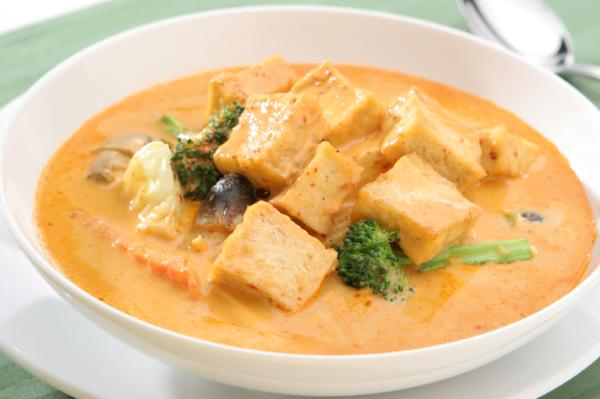When to Add Paneer to Curry


Paneer is a fresh, soft cheese commonly used in South Asian cuisine, especially in India. It is made by curdling hot milk with a souring agent, such as lemon juice or vinegar, and then draining the whey. Unlike many cheeses, paneer does not melt, making it versatile for various cooking methods like frying, grilling, or adding to curries. It has a mild flavor and is often used in vegetarian dishes like palak paneer and paneer tikka. However, knowing when to add paneer to curry is important for both texture and flavor.
In this oneHOWTO article, we’ll guide you on the best time to add paneer to curry, ensuring you enjoy it at its perfect texture and flavor.
Nutritional value of paneer
Paneer is a good source of protein, especially for vegetarians. Its nutritional value varies based on its fat content, but a 100-gram serving of full-fat paneer typically contains:
- Calories: 265 kcal
- Protein: 18-20 grams
- Fat: 20-22 grams
- Carbohydrates: 1-2 grams
- Calcium: 200-250 mg
- Phosphorus: 130-150 mg
Paneer is rich in essential nutrients like calcium, which supports bone health, and provides a good balance of healthy fats and protein, making it a great addition to a balanced diet.
Adding paneer at the right moment
For the best flavor and texture, add paneer during the final stages of cooking. Once your curry is nearly complete, gently incorporate the paneer chunks or cubes. Cook for approximately 2 minutes before turning off the heat. This allows the paneer to absorb the flavors of the curry without becoming tough.
Overcooking paneer can result in a tough, rubbery texture. By adding it at the right time, you'll preserve its delicate flavor and creamy consistency. When paneer is cooked for too long, the proteins in it can denature.
Some recipes involve frying paneer until golden brown before adding it to the curry. This adds a crispy texture to the paneer.
Perfecting the timing is key, but maintaining paneer’s soft texture is just as crucial. Find out how to achieve that perfect consistency.
How can you make homemade paneer softer
Store-bought paneer tends to be firmer than homemade varieties. When making paneer at home, the quality of the milk plays a significant role. Opt for full-cream cow's milk for the best results.
For softer paneer, add 1 teaspoon of curd to the milk while curdling. Leave any floating cream in the milk, as it contributes to softness.
Avoid over-curdling by removing the pan from heat as soon as the milk separates completely. Overcooking can make the paneer tough. Pay attention to the color of the paneer. It should turn a slightly golden brown when cooked.
Gently press the paneer with a fork. If it feels tender and slightly bouncy, it is cooked to perfection. Once the paneer is heated through and has reached the desired texture, remove it from the heat to prevent overcooking.
Explore our guide on using vinegar to create fresh, homemade paneer.
Other tips to make best paneer curry
For the perfect paneer experience, follow these tips:
- For a crispy exterior, deep-fry paneer cubes in moderately hot oil until golden brown on both sides. Avoid overfrying to maintain a soft interior.
- If you prefer a softer paneer, boil the cubes instead of frying. This method is also lower in calories.
- Store paneer in an airtight container in the refrigerator. Due to its milk-based composition, paneer has a short shelf life. Consume it within a week for optimal freshness.
- While microwaving paneer is convenient, stovetop preparation generally results in a softer and more flavorful product. For the best quality, opt for the traditional stovetop method unless time is a constraint.
- Store the paneer in the refrigerator to prevent spoilage.
- Paneer has a relatively short shelf life, so use it within a week of purchase.

If you want to read similar articles to When to Add Paneer to Curry, we recommend you visit our Food & drink category.





